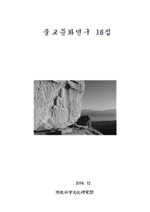무아(無我) 가르침의 진의
True meaning of the teaching of non-self
- 동국대학교 불교사회문화연구원
- 불교문화연구
- 제10집
-
2009.12143 - 172 (30 pages)
- 560

적어도 표현상, 무아는 다른 종교나 철학 사조와는 전혀 다른 모습을 띄고 있다. 대개의 종교는 육체의 죽음을 초월하는 상주불변의 실체를 상정하여, 그것이 사후에도 지속된다고 믿는다. 불교의 무아설은 영원불변의 실체를 부정하기 때문에 다른 종교나 철학과는 구별되어 진다. 그런 만큼 불교 내외에서 무아설은 많은 논란을 야기시켜 왔다. 본고는 무아 교설을 정확하게 이해하기 위해서는 무엇보다도 먼저 불교의 궁극적 이상인 열반과 관련하여 파악되어져야만 한다고 전제하고 있다. 범부가 당면하고 있는 고통은 아견에서 기인한다. 다른 존재와는 개별의 자아가 존재한다고 생각하는 아견은 나와 남을 분리시키고 각종 문제들을 일으킨다. 나와 전혀 다른 자아가 있다는 분별의식은 남과의 비교를 통해, 아만과 열등감을 초래한다. 아견에 뿌리를 둔 욕망은 살아서는 항상 경쟁과 갈등의 세계에서 머물게 하고 사후에는 항상 되기를 바란다. 시간과 공간을 초월하여, 신체 어딘가에 상주한다고 여기는 상일주재의 자아관념은 무상한 오온에 대한 집착에서 생긴 상상물에 불과한 것으로, 고통의 근원이 된다. 이러한 그릇된 자아관념, 즉 아견을 부정한 것이 무아설이다.
The early Buddhist texts are not so clear as to whether the existence of a self is rejected or not by the Buddha. Much has been written about this issue, without a clear and unambiguous solution in sight so far. I arrives at the conclusions that the early texts neither accept nor reject the self. Whether or not the Buddha accepted the existence of a self, it is certain that he did not preach knowledge of the self as an essential element of the path to liberation. According to theory of a person, matter, feeling , ideation, the habitual tendencies, and consciousness are the five constituents (skandha) of a person. Together they constitute the person s body and mind. The Buddha teaches that with regard to none of these one can say This is mine, this am I, this is my self . It is stated that one is not identical with any of these constituents. Self and suffering are synonymous and caused by clinging to the five aggregates. To question of how a view of the world that includes a sense of self arises, the answer describes those who in addition to having no regard for the Path: • regard any or all of the aggregates as possessing self, • or regard self as possessing any or all of the aggregates, • or regard any or all of the aggregates as being in self, • or regard self being in any or all of the aggregates. This answer guides us closer to the origins of suffering, pointing out the specifics of the ways in which we associate self with the aggregates. When there is no self, there is no suffering. That is what the Buddha means by the teaching of non-self.
국문초록
Ⅰ. 서론
Ⅱ. 무아는 아트만을 부정하는가?
Ⅲ. 아견과 고통의 발생
Ⅳ. 맺는 말
참고문헌
Abstract
(0)
(0)